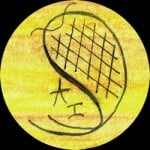Rabbets without a skew rabbet plane
Welcome! / Forums / General Woodworking Discussions / Wood and Wood Preparation / Rabbets without a skew rabbet plane
Tagged: rabbet, skew rabbet plane
- This topic has 10 replies, 7 voices, and was last updated 10 years, 1 month ago by
 MTaylor.
MTaylor.
-
AuthorPosts
-
27 January 2014 at 1:40 pm #26631
Hello everybody,
I’m a beginner and I’d like to know if there is any method to produce clean and smooth (visible and long) rabbets across the grain * without * using a skew rabbet plane (because I currently do not have a skew rabbet plane…).
Or should I buy a skew rabbet plane?I’ve tried to apply an hybrid approach :-), mixing the techniques I use when I make dadoes and tenons – knife wall and chisel to split -, but the result is not so smooth… Quite impossible (at least for me) flattening the surface…
Anyway, if I had to buy a rabbet plane (maybe the one from Veritas), can you confirm that a skew rabbet plane produces smooth surfaces immediately (across the grain)?
Thank you very much!
Kind regards.
Emilio
 27 January 2014 at 2:00 pm #26633
27 January 2014 at 2:00 pm #26633
@emilio-remogna i use a # 78 stanley rebate/rabbet plane they can be a bit tricky on cross grain cuts but a bit of practise and a sharp nicker they work great they can be bought on ebay at very good prices (in the UK ) good luck 27 January 2014 at 4:53 pm #26659
27 January 2014 at 4:53 pm #26659Thank you very much for your replies!
@dave : yes, what you say makes sense to me; I could also stay with the chisel above the splitting line and then smooth the rabbet with the chisel (gently pushing the chisel toward the shoulder not to damage the fiber).
I also understand that for wide pieces it can be a long and not so easy job. But it can work.
@edfly : could a skewed blade help a little?Kind regards.
Emilio
 27 January 2014 at 5:25 pm #26661
27 January 2014 at 5:25 pm #26661Emilio, do you have a router plane? A sharp blade in the router plane should give you a pretty smooth and flat surface after the saw and chisel work. Never underestimate the power of a sanding block either.
 27 January 2014 at 5:35 pm #26662
27 January 2014 at 5:35 pm #26662One of the biggest influences on smoothness is grain and wood type in cherry and walnut for instance the surface would be silky smooth with no effort. In oak and most pine it’s going to be a different story. This mostly because of the growth rings. At one point the plane iron may be cutting 90-degrees to the surface and further into the cut the cutting iron may be planing stock with the growth ring parallel to the surface and then again, on the out-stroke, you can be attacking the wood with more resistance, again directly related to the growth ring. Because of the soft and hard aspects of the growth ring, regardless of sharpness or tool, the wood in the soft aspect compresses when you hit the hard aspect and as the follow through springs back it tares the adjacent soft grain. Not much you can do, but sometimes you can alter direction and come at a slight angle from a different direction. It’ is rarely just a question of the more force. Using the hand router usually improves everything because the cut is so much narrower.
28 January 2014 at 12:19 am #26707Hello everybody,
thank you very much for all your replies!
Tomorrow I will post some photos of a little (~10′) experiment.
28 January 2014 at 2:03 pm #26742Hello,
I’d like to share the results of my little experiment (see attached image).I’ve used the chisel (to split the wood), the router plane (to flatten the surface) and the sand paper (to smooth).
Paul’s words suggested me to use the router blade more as a “chisel” than as a plane; the movement is a sort of rotation, using one of the handles as the center for the rotation; this movement allows to gently cut the fiber with a skew angle and toward the shoulder. (I think this movement is similar to the one you do with a chisel to finish the end of a tail).
The wood I’ve used is pine (a scrap).
Thank you very much again for your help!
Attachments:
You must be logged in to view attached files. 28 January 2014 at 8:22 pm #26753
28 January 2014 at 8:22 pm #26753Thank you, David,
yes, you’re right.
I’d just like to add – I’m sorry, it’s not so clear in my photos – that the router can move clockwise or anticlockwise and that each of the handles can be the center for a rotation; so, I suppose (but I’m not sure), you should have more chances not to break the wood.
Anyway, it was only a little experiment. 🙂

Not sure if this helps but, I take a set of tools overseas with me to some pretty remote places. When I select a tool I need it to do as much as possible so I look at things pretty hard. When I was selecting block planes I choose the LN #60 rabbet block plane. It has nickers to cut rabbets but I have never used them. To cut tenons or rabbets I cut the shoulder with a handsaw and then use the block plane. If its big I knock out some big chunks with a chisel. I have done this in Pine and African mahogany with good results.
-
AuthorPosts
- You must be logged in to reply to this topic.
